Order: Cuculiformes. Family: Cuculidae
Description
39 cm. Black upperparts, bill, legs and long tail. Chestnut wings. White underparts. Key distinguishing feature is the unbarred brown rump, sometimes difficult to see in field. Sexes are similar.
Juveniles are duller and streaked above, upperparts barred black, uppertail covert finely barred buff; bill initially pale horn coloured.
Similar species: Distribution overlaps only slightly with larger Burchell's Coucal. Told from Burchell's Coucal in having unbarred uppertail coverts. Senegal Coucal lacks the fine barring on the rump and base of the tail. It differs from larger Coppery-tailed Coucal by its smaller size and by the brighter chestnut colouring on the wings and back, has a less heavy bill and a shorter tail with green iridescence. Juvenile of this species and juvenile Coppery-tailed Coucal are indistinguishable in the field except on size.
Distribution
It has three separate populations in Africa; one in Egypt, another in the area from Senegal to Ethiopia south to northern DRC, and finally one in Tanzania, Zambia, south-eastern Angola and southern Africa. Within southern Africa it is generally uncommon in north-eastern Namibia, northern and eastern Botswana, Zimbabwe and central Mozambique. The Senegal Coucal covers most of Zimbabwe, except some eastern districts. In Botswana it occurs in the Okavango, part of the northern Chobe District, and just into the Tuli Block along the Limpopo River in the east. In Namibia it is found in the Caprivi and along the Okavango River, with isolated scattered records further south.
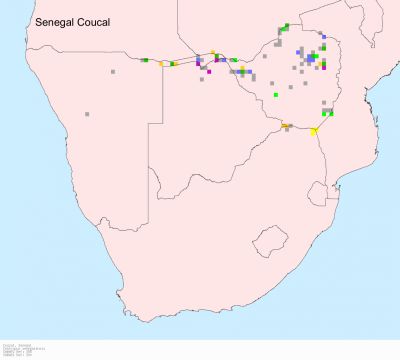
Habitat
It generally prefers scrub and thickets along or near watercourses, secondary forest regrowth, the border between woodland and grassland as all man-modified habitats with dense cover, such as fallow lands, sugar cane fields, parks and gardens.
Diet
Mainly eats invertebrates, reptiles and bird chicks, doing most of its foraging by searching the vegetation and occasionally descending to the ground.
Breeding
Probably monogamous and territorial. The nest is likely built solely by the female, consisting of a loosely-built dome with a side entrance, made of grass and twigs and lined with green leaves. It is typically placed in a tangled clump of creepers in a bush or tree. Egg-laying season is from October-March, peaking from November-January. The female lays 2-5 eggs, which are incubated solely by the male for about 17-19 days. The chicks are fed by both parents, they leave the nest after approximately 18-20 days.
Call
Bubbling liquid notes, sometimes in duet ook-ook-ook call Listen to Bird Call.
Status
Uncommon in most areas. Resident, with some local movement.



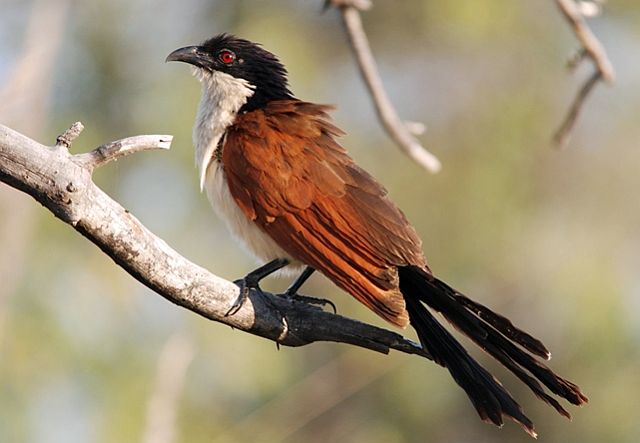 © Toko
© Toko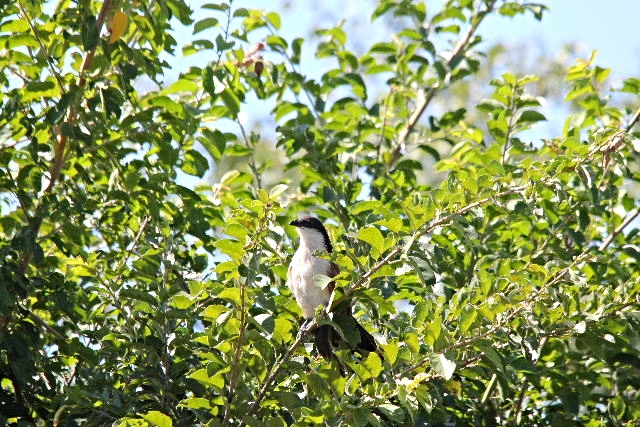 © pooky
© pooky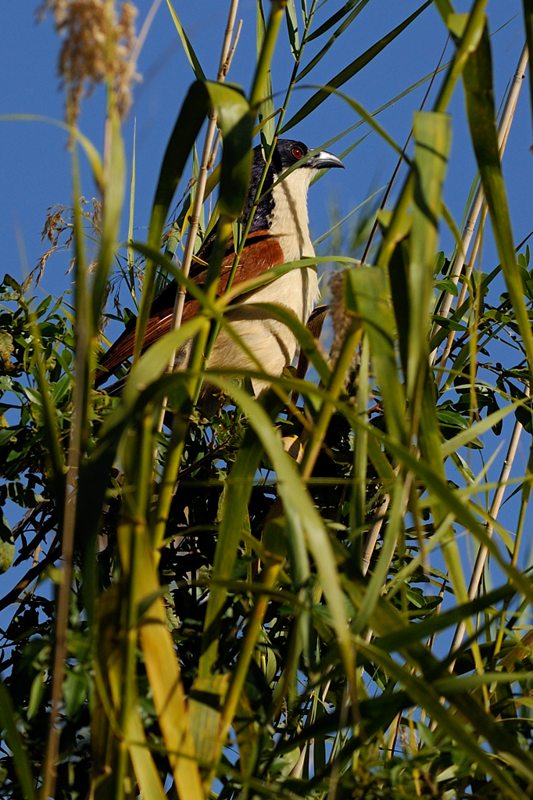 © Dewi
© Dewi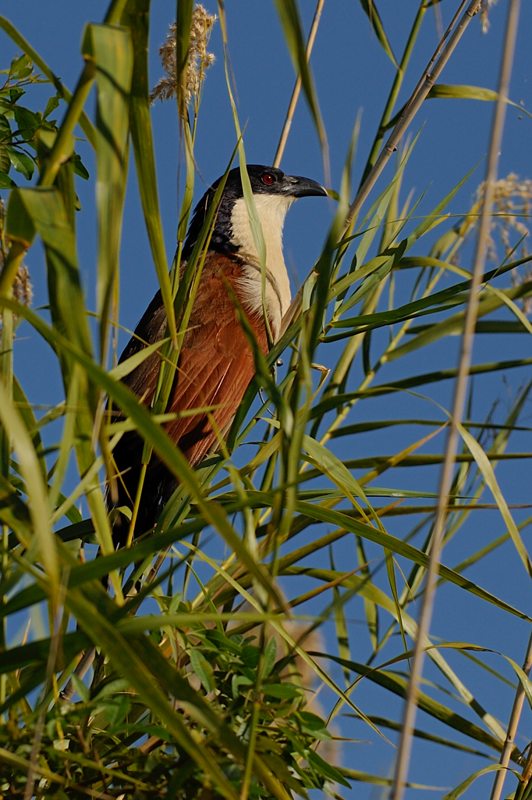 © Dewi
© Dewi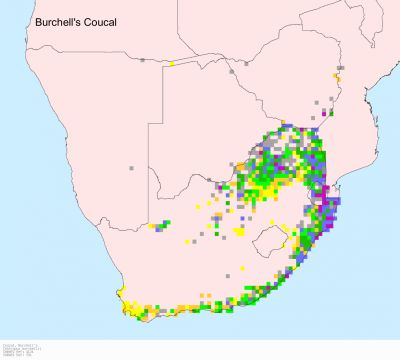
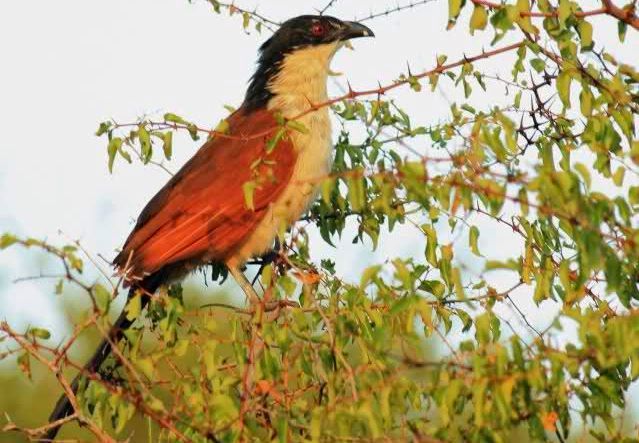 © Flutterby
© Flutterby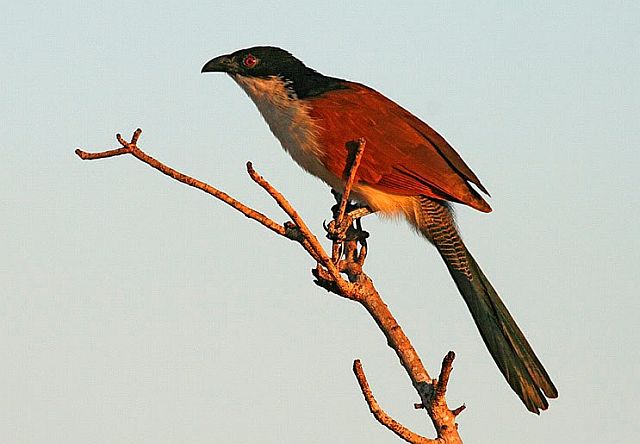 © Leachy
© Leachy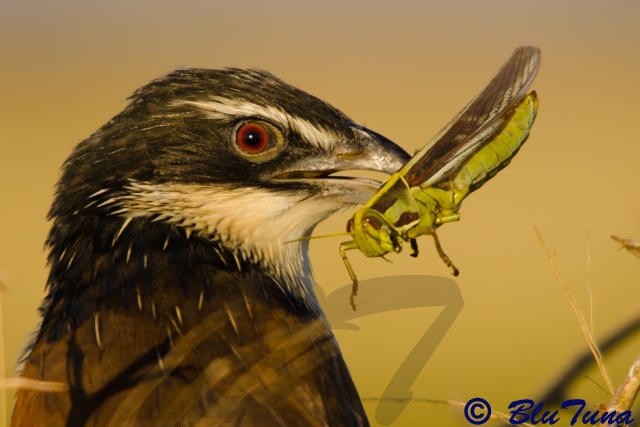 © BluTuna
© BluTuna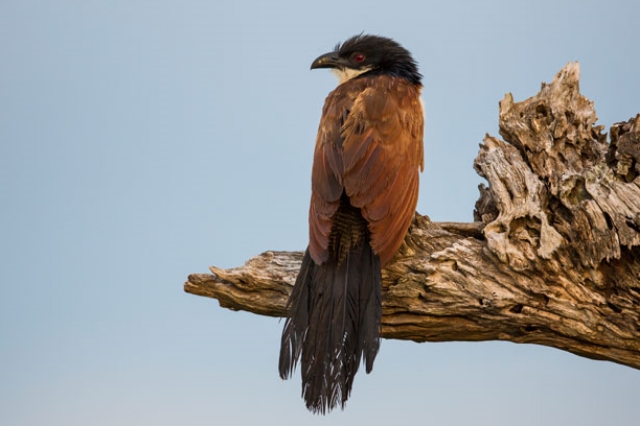 © Pumbaa
© Pumbaa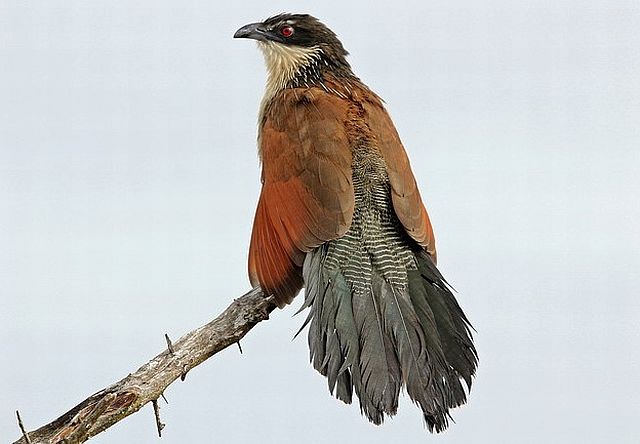 © Bushcraft
© Bushcraft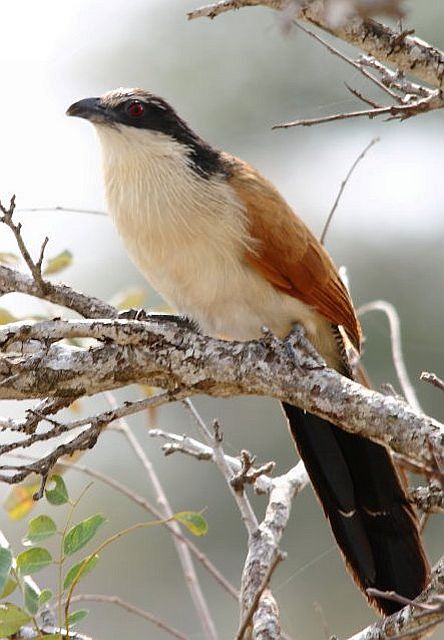 © Flutterby
© Flutterby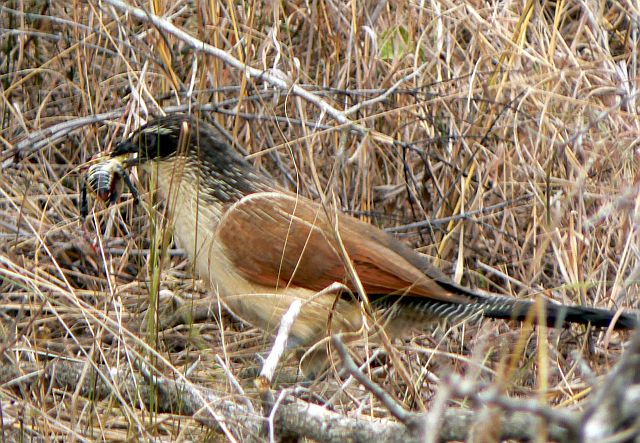 © Toko
© Toko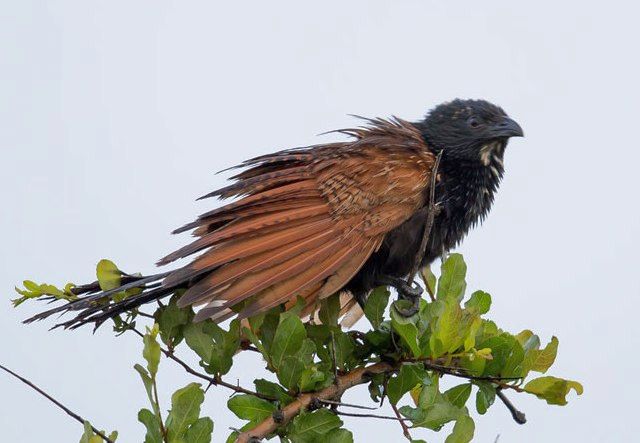
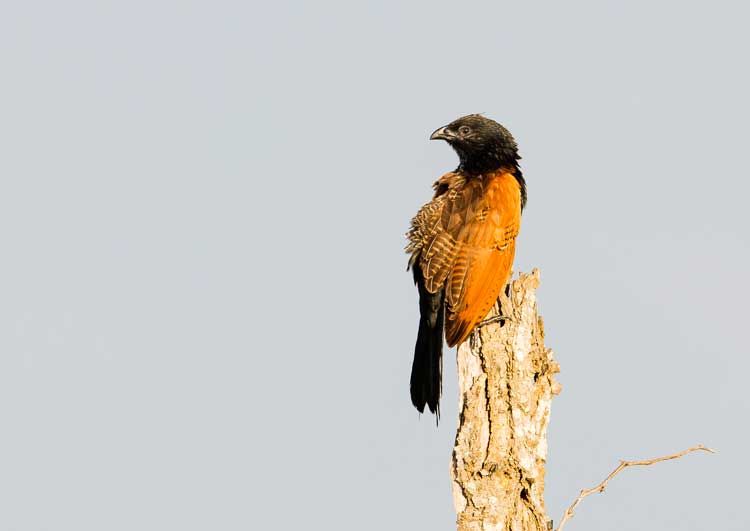
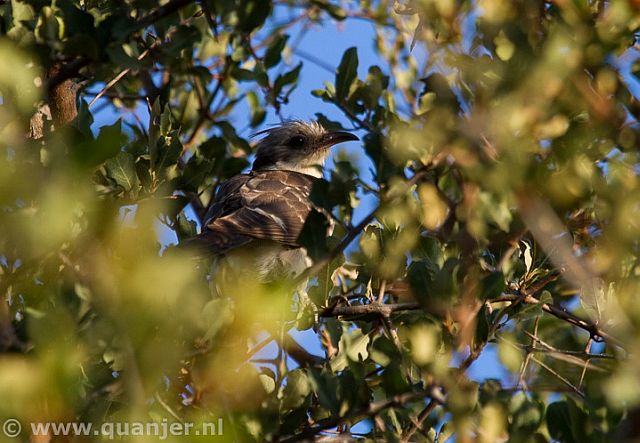 © Guinea Pig
© Guinea Pig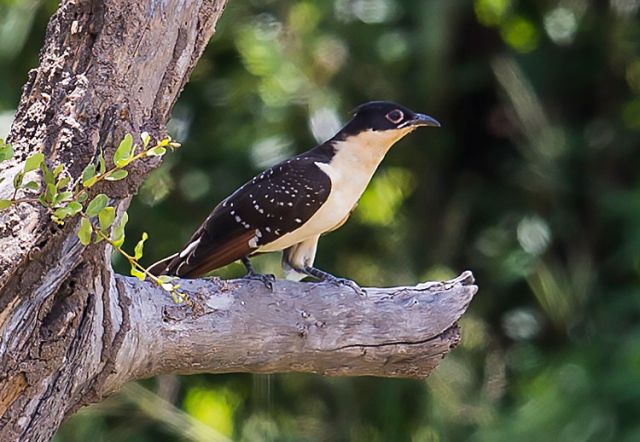 © Pumbaa
© Pumbaa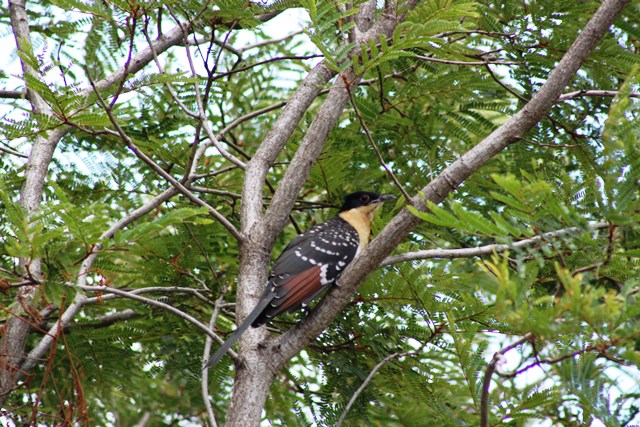 © Heksie
© Heksie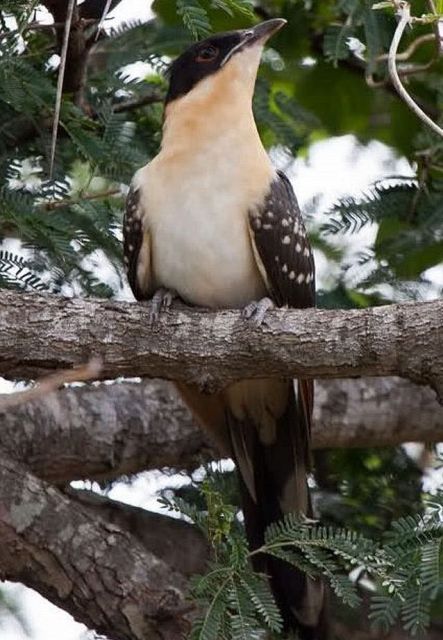 © Pumbaa
© Pumbaa